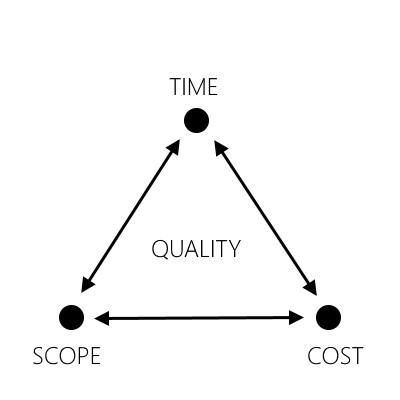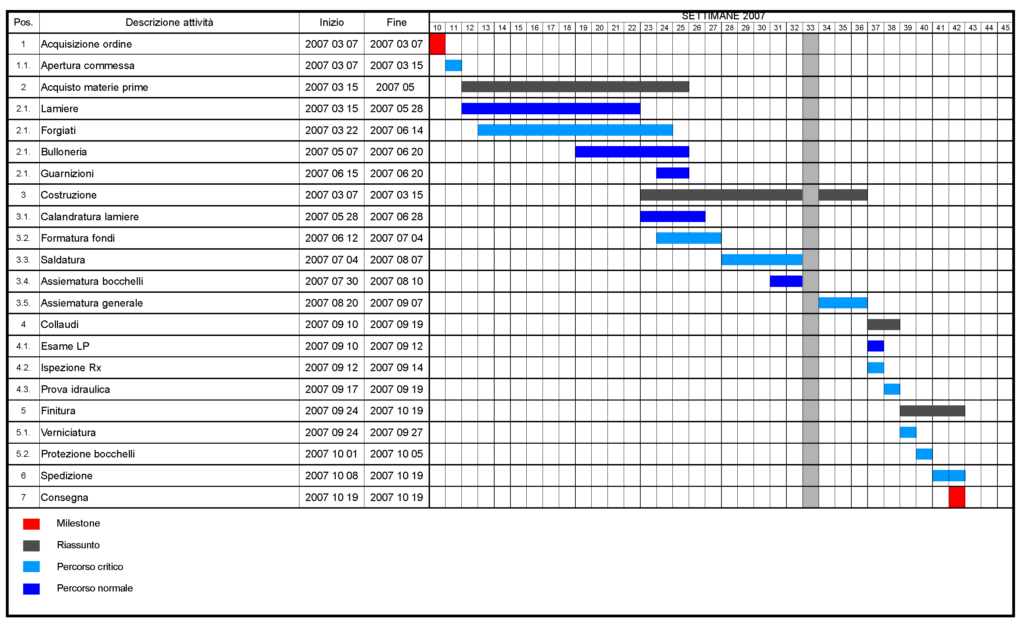Project management … does it serve me too?
The discipline indispensable for the achievement of each activity
Reading Time: 5 minutes
What makes such a project? … its duration, its reward in economic terms, the role of those who are carrying it out, the part of the risk that is taken, the final reward?
We often think that the projects are only space projects such as “Apollo 11” or that, however, only concern managers of multinationals or leading representatives and heads of state.
In fact, we are all involved in this kind of activity every time we are about to do a project, from the simplest and most everyday, such as going shopping, to the most complex one of making a product or putting it on the market.
Why do we say that a project has been successful? Behind its success there is first of all a form of thought that translates into a working methodology: Project management.
If you are curious to know more I invite you to read what this article is about.
What is a project
The general definition of project is:
a set of activities related to each other with a beginning and an end for the achievement of a specific goal, contextualized within time, cost and resources limits
By its very definition, a project becomes any thing that has these characteristics. And therefore it is a project the creation of an online event, the creation of a new product, the move into a new home and even the supermarket shopping.
Every time we create (or modify) an object, a service, a behavioral protocol that was not there before or was different we have created a project.
The phases that distinguish it are five:
- starting up
- planning
- execution
- monitoring and control
- closing
These consecutive phases form the life cycle of a project that, let’s remember it once again, always has a beginning and an end. 🙂
Project Management
We think of a project as a mathematical function like this one:
f(E,R,T) = S
where:
- the dependent variable f(x) is the SCOPE (the final result produced by the project)
- the initial variables are:
- EFFORT (total amount of work required)
- RESOURCES (amount of work resources available)
- TIME (project duration)
By changing the three input variables, the final result changes and its immediate consequence is the final quality of the product or service provided. A representation of the relationship between the project variables is given by the following figure

We can therefore consider a project as successful if it achieves its goals within a certain period of time and with an agreed budget.
The project management is the set of all those methodologies applied to the setting up of a project that includes two main activities
- planning
- control
to achieve the goals through proper management of resources and costs.
In order not to bore the reader too much, with the disanimation of the individual phases, I would just like to mention some of the underlying aspects necessary for the management of a project:
- analysis of the context and organizational structure
- risk analysis
- the feasibility study
- cost/benefit evaluation
Only after an initial analysis of these aspects will it be possible to proceed or cancel the project itself if it is ‘not feasible’.
Who is the Project Manager
The project manager is the one who leads a project and whose function is to understand exactly how to achieve the specific objectives of the project, with what resources and in how much time.
It is therefore a very important and very complex role. For this he needs a wide range of technical and management skills and competences.
Specifically, a project manager must be able to:
- define the specific objectives of the project in terms of quality of the results, cost-benefit analysis and estimation of the resources and timing needed to achieve it
- develop and implement a management plan for the project, articulated in intermediate phases with measurable objectives;
- monitor progress with respect to the original plan or any deviations, in this case manage risks, problems and any changes to the original project
It must also possess all those personal skills that can guide and motivate the project team and which, unfortunately, no tool can provide 😉
The Toolbox
In the toolbox of a good project manager, the GANTT DIAGRAM cannot be missed. It is a model for the representation of the temporal succession of the activities that make up the project. It is constructed starting from a horizontal axis that represents the time span of the project and a vertical axis that represents the tasks and activities that make up the project.

Most project management software provides the Gantt diagram but it is also possible to create it autonomously and easily thanks to the most widespread and powerful tool available to everyone, Excel.
Another important aspect concerns the presentation of the results. The situation here too is very varied as you can use simple dashboards up to advanced Business Intelligence tools.
Project Management Benefits
There are many advantages to adopting this methodology within an organization:
- Reduced costs and risk of error
- Reduction of time wastage
- Increased efficiency
- Satisfaction of the main project stakeholders
- Improved teamwork and motivation
- A better reputation for the organization for the results achieved
- More opportunities
- Greater forecasting capacity deriving from monitoring and control processes
- Improved ability to react to possible risks
- Better quality of work
- Process and product improvement
- Favouring innovation
- Improved productivity
Conclusion
Whatever the project we have to carry out, for its success we need a correct approach, that of project management where planning and control and measurement of results (partial and final) are the fundamental tasks.
Once we have adopted this methodology, we then need the appropriate tools. There is a wide range of software for managing projects, from simple to complex, from free to very expensive.
We do not necessarily have to use advanced and, for this reason, often complicated tools. We can also do this on our own, with tools created from a simple Excel spreadsheet.
The aim of this article was mainly to show how a good organization can determine the success or otherwise of a project and how this affects us all, both in the private and professional sphere. If you are interested in further details on the various aspects please contact me.
First I would like to know a little more about you and ask you:
“What does project management mean to you in your business?”

